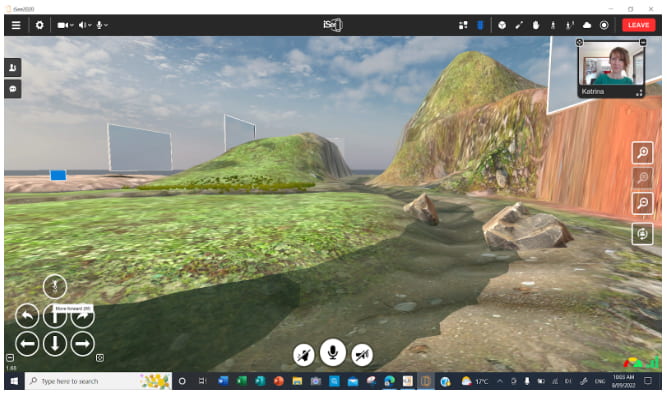
Digital Initiatives
iSee Early Adopter Project
During Semester 2, 2022 UniSQ staff were involved in an early adopter program showcasing the use of immersive and virtual learning environments. Let’s have a look at the who, what, why, and how of it, finishing with the all important So what now?
Why



What? iSee
iSee is an innovative platform that allows for immersive experiences. Its focus is on educational contexts and it is driven in design and usage by clear, pedagogical principles. These include a set of overarching Digital Teaching Principles; Zones of Digital Teaching and Learning to orientate pedagogical choices; and the Digital Teaching in Action model.
iSee has three key applications within the Higher Education market:
- Teaching and learning, including immersive learning experiences.
- Community building, including developing a sense of belonging amongst participants.
- Research and development, including hosting conferences and events.
How iSee Works
iSee allows for the creation of “worlds” or “scenes”. Take for example the “On Country” world used within the Early Adopters program. A brief video of part of this world is found here and images are found below. Each virtual “world” can be made up of one or more “scenes”. “On Country” was inclusive of several scenes, including a fire circle, island, stream, mountain, and native bushland. Each of the scenes can be customised through the inclusion of a number of different “boards” which are designed to engage students in activities and discussion. “Boards” can be posters, links to websites, or other online learning tools, such as Padlets.
Students may select or be directed to individual scenes within their world. A unique feature of iSee is that, instead of selecting an avatar, students appear in iSee in a video tile and are thus able to view their fellow students in a more life-like manner. Once in their chosen scene, students are free to move about as they wish, or as they are guided to. Students can “teleport” directly to other students, or they can move to the different “boards” to engage in the set activities. Sound is proximity based. In this way, students can only hear the people they are close to.
Who

EAP1: HSW1400 Working with Families in the Human Services
The first early adopter group included Krystal Schaffer and Nina Smith from the School of Psychology and Wellbeing. Their course, HSW1400, focuses on the skills needed to work with families in the human services, in a diversity of fields of practice, including child protection, domestic and family violence, the disability sector, and mental health. An immersive environment was selected, and designed, to focus on the development of skills related to working with families, in a way that lent itself to students being able to practise and develop this skillset in an environment that is designed to be both controlled and safeguarded.

IHEPP Intensive
The second early adopter group was Sue Tuitupou and Sam Conway who selected the tool for use within the Indigenous Higher Education Pathways Program (IHEPP). As a Pathways program, IHEPP provides an introduction to many elements of university life, including online learning tools. The objective for Sue’s use of the platform was the creation of a sense of belonging and connection for students within an online environment. Initial designs for the experience focused on six boards, each linked to one element of the theme: body, mind, spirit, country, and past – and how to expand on that story to make it future.
So what now?
Though both early adopters and students experienced several barriers with the use of the tool, and identified context-specific limitations, staff and student surveys overwhelmingly suggest that overcoming these barriers was worthwhile.
The early adopter program has demonstrated a clear need for immersive and virtual learning environments at UniSQ. We have the interest, the capacity to innovate, and students ready to explore with us. Now we simply need to experiment further.
A Virtual and Immersive learning environments group has been set up to explore relevant platforms and work towards a university wide pilot. Interested? Contact Katrina Cutcliffe on Katrina.Cutcliffe@usq.edu.au.

